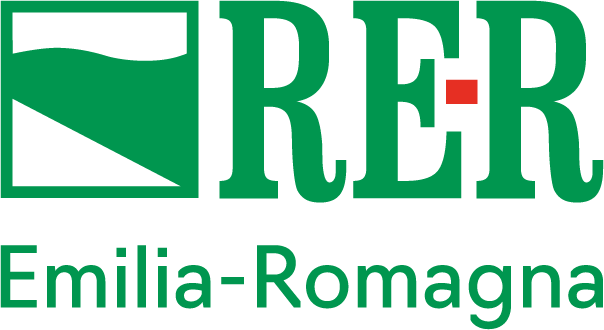Bioavailability of heavy metals and metalloids in soil

What is bioavailability?
Bioavailability is the amount of chemicals (in this case heavy metals and metalloids contained in soil taken up and metabolized by human or biological receptors or that are available for interaction with the biological system (ISO 17402:2008 Ch.3 sec.3.1).
Knowledge about bioavailability
Soils naturally contain heavy metals in varying amounts depending on the rock/sediment on which they were formed. Also, in the topsoil the natural content is supplemented by contributions related to human activities due to land use, agronomic management and atmospheric fallout. Metals contained in the topsoil may undergo uptake by plants through root action and/or deep leaching through the action of rainwater. This portion, called bioavailable, is the one that most interacts with organisms in the biosphere and affects the health of humans and the environment in general.
Knowledge of bioavailability therefore starts with the soil, the characterization of which is the key element that conditions subsequent assessments of food safety and risk to health and the environment. Threshold values and precautionary values of heavy metal bioavailability are present in some European regulations (Belgium, Germany, Sweden, Great Britain etc.) but not in the Italian law.
How to determine bioavailability
The reference standard chosen by the Emilia Romagna Region is ISO 17402:2008 “Soil quality--Requirements and guidance for the selection and application of methods for the assessment of bioavailability of contaminants in soils and soil materials,” within which the distinction between potential bioavailability and actual bioavailability is highlighted to indicate, respectively, the maximum mobilizable fraction of metal and the fraction actually mobile under the environmental conditions at which it is sampled.
- Effective bioavailability to plants: exchangeable fraction. It represents the fraction of the pseudo-total metal content that can be exchanged with soil surfaces by mobilizing as the concentration of salts in the circulating solution changes.
- Effective bioavailability to water: soluble fraction. Represents the fraction of the pseudo total metal content that can be solubilized in water.
- Potential bioavailability. Represents all the fraction of the pseudo total metal content bound to organic and inorganic colloids in the soil bearing in mind the chemical and physical characteristics of the pedosphere and the chemism of each element. The extractant solution formed by diethylenetriaminicopentacetic acid, generally referred to as “DTPA” (DM13/09/99 XII.I method), is normally adopted for metal extraction in non-acidic soils.
The regional project
From 2014 to 2020, the Geology, Soil and Seismic area, in collaboration with the ARPAE laboratory in Ravenna, determined the bioavailability in topsoil samples (standard depth between 20-30 cm) of even metals (As, Cr, Ni, Cu, Zn, Pb, Sn), collected during the survey for the Natural-Anthropic Background Map. A variable number of samples were analyzed using the following three methodologies:
- AMMONIUM NITRATE (DIN 19730 method; 2008): representative of the actual bioavailability for the soil-plant transition, the so-called exchangeable fraction (342 samples); Extraction of trace elements from soil using ammonium nitrate solution.
- LEACHING TEST 1/10 RATIO (method UNI-EN 12457-2; 2004): representative of the actual bioavailability for soil-water passage, the so-called soluble fraction (340 samples).
- DTPA (diethylenetriaminepentaacetic acid) extraction method (DM13/09/99 XII.I method): representative of potential bioavailability for plants and water (205 samples).
The values obtained are relative to the soil type and sampling site but still provide a significant figure given the representativeness of the chosen sites with respect to ordinary agronomic management and regional soils. For this purpose, the results of the three extractions were evaluated with respect to pseudo-total aqua regia content by subdividing them into geochemical affinity soil groups (Genetic Functional Units or FGUs) based on texture, degree of evolution, origin of the sediment on which the soil originates and organic matter content. The number of samples for each FGU varies greatly, so some results are more established than others.
Ammonium nitrate extraction results
The seven metals analyzed can be divided into two distinct groups:
- Cu, Ni and Zn have the highest values (up to 3 mg/kg for Copper); there is a more frequent correlation between pseudototal and bioavailable content for Copper (in FGU A2, A3, A4, B2, B4, C2) and Nickel (in FGU A3 and A4);
- Cr, Sn, As and Pb show systematically lower values by at least an order of magnitude. There is no correlation between pseudototal and bioavailable content.
The analysis by Genetic Functional Units identified on a geochemical basis highlighted the main factors influencing bioavailability, which are related to:
- intrinsic characteristics of soils. There is moderate evidence that bioavailable As, V, Cr, Ni, Pb and Zn increase as pH decreases, while Cu and Sn do not;
- origin of the metal: anthropogenic or natural;
- ability to bind to more or less stable soil fraction
Regarding land use, the crops affected by higher bioavailability values are grapevine, orchards and rice, followed by poplar groves and finally some forest species.
Leaching test results
The extractable values compared to the pseudo total content are very low (<0.5%), except for Copper, Arsenic and Zinc; in terms of bioavailable contents Copper and Nickel proved to be the metals with the highest effective bioavailability to water. In terms of the correlation between the bioavailable content of the soluble fraction and the pseudo total content, only Copper shows good correlation in FGUs A1, B3, C2 and D1, moderate correlation in FGUs A2, B4 and B6 and B1, while for all other metals there is no correlation: the only exception being Arsenic in FGU D1. The main factors affecting bioavailability are related to the intrinsic characteristics of soils such as:
- Texture: in moderately coarse and coarse textured soils all metals tend to be more soluble, particularly Copper; finer textured soils are those with less tendency for bioavailability of the soluble fraction.
- pH: there appear to be dependent relationships between pH and soluble content particularly for Chromium, Nickel, Zinc and Lead, which appear to be inversely correlated with this parameter in some UGFs, while Copper does not appear to be dependent on this parameter.
Regarding land use, the rice fields stand out, where the highest values of Arsenic, Chromium, Nickel, Zinc and Lead are recorded, partly because they are located almost exclusively on the acidic peaty soils (FGU A2); among the most bioavailable metals, Copper has the highest values in grapevine, orchards and forests.
Reports (italian language)
Geological, Soil and Seismic Survey
